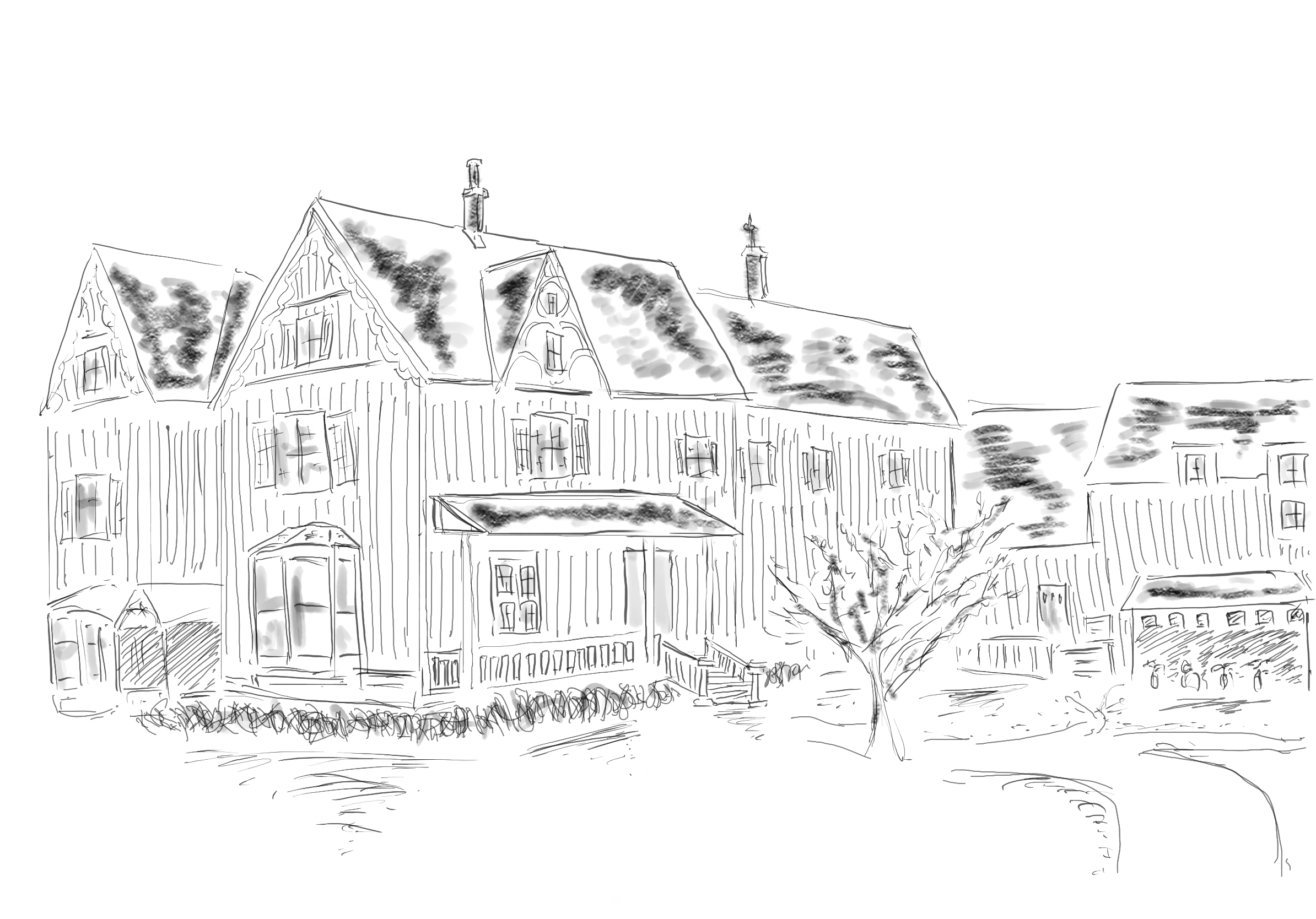Let student creativity shape sterile campus spaces
May 6, 2022
 This
piece represents the opinion of the author
s.
This
piece represents the opinion of the author
s.
 Karam Sutham
Karam SuthamAs the first sophomores to live in the newly renovated Boody-Johnson House, we arrived in August 2019 to stiff couches, blank walls and a clinical gray color scheme. As Burn affiliates, we’d dreamt of purple wallpaper, massive bean bags and painting our names in the basement. Reality was a hard pill to swallow.
One thing about Bowdoin: our campus buildings are boring, especially the new ones. Even quirky older buildings like Smith Union are being updated with corporate-looking black and white signage. There are pockets of creative expression: WBOR basement, the Quinby dancefloor, the inside of the Roux bathroom stalls (we see you, underground leftist posters). And Coles is super tall, which is kind of cool.
But in its quest for a sustainable aesthetic and adherence to unfortunate school colors, Bowdoin seems to have forgotten another important goal: creative expression.
What’s more, preserving the beloved pockets that do remain doesn’t seem to be a priority for the school. With the College’s plans to tear down the century-old Dudley Coe building to connect the Roux Center and new Arctic Studies Center to campus, WBOR’s treasured basement studio will be lost. The space offers a rare glimpse into the eclectic lives of past students. In the studio’s dark clutches you can find references to decades of student activism, pop culture, fun design and plain ol’ good humor.
Our past two years at Bowdoin have been defined by social distancing and Zoom classes, making it hard for students to pass on a sense of community and place. This is a strange experience for underclass students who lack the context of past traditions. For returning juniors and seniors, Bowdoin has become an unfamiliar domain in many ways. Spaces like WBOR that showcase the legacy of diverse student life and allow for freer artistic expression combat this sense of fragmentation.
Some of the few spaces at Bowdoin that offer this experience are off-campus houses. They come furnished with an eccentric mix of furniture and kitschy art accumulated over the years. With some exploring, you can often find notebooks or artwork left behind by students past. Being inside the houses can feel cozy and creatively stimulating. But these spaces are also inherently exclusive and the leases are passed on socially, making them inaccessible to many students.
Other college campuses have answered the call for student expression. Consider MIT’s system: in undergraduate dorms, students are allowed to turn their rooms and hallways into living murals. The college has an implicit agreement with the student body: if it’s a wall on East Campus, it’s an available canvas. Over the years, the environment has become a site of collective memory as well as community bonding. MIT does not have to monitor the walls much—the good art sticks around, the bad gets painted over. This process lets students have a say in how the spaces they call home look and the identities they express.
Is it so crazy to imagine roommates painting their Brunswick Apartments living rooms? Or student-made sculptures in the middle of Harps quad? Here’s an idea––it’s a little crazy, but give it a go. In the first-year dorms, college houses and other spaces that act like campus living rooms, the College could install a second wall layer as a type of detachable canvas. In fact, this is in the plan MIT has created for its newly renovated, more expensive dorm rooms.
No one wants to mar a historic landmark or a new multi-million dollar facility in the name of doodles. But maybe, just maybe, it’s not an either/or.
Irene Brogdon and Emilia Majersik are members of the Class of 2022.
Comments
Before submitting a comment, please review our comment policy. Some key points from the policy:
- No hate speech, profanity, disrespectful or threatening comments.
- No personal attacks on reporters.
- Comments must be under 200 words.
- You are strongly encouraged to use a real name or identifier ("Class of '92").
- Any comments made with an email address that does not belong to you will get removed.

Nice work doodz!